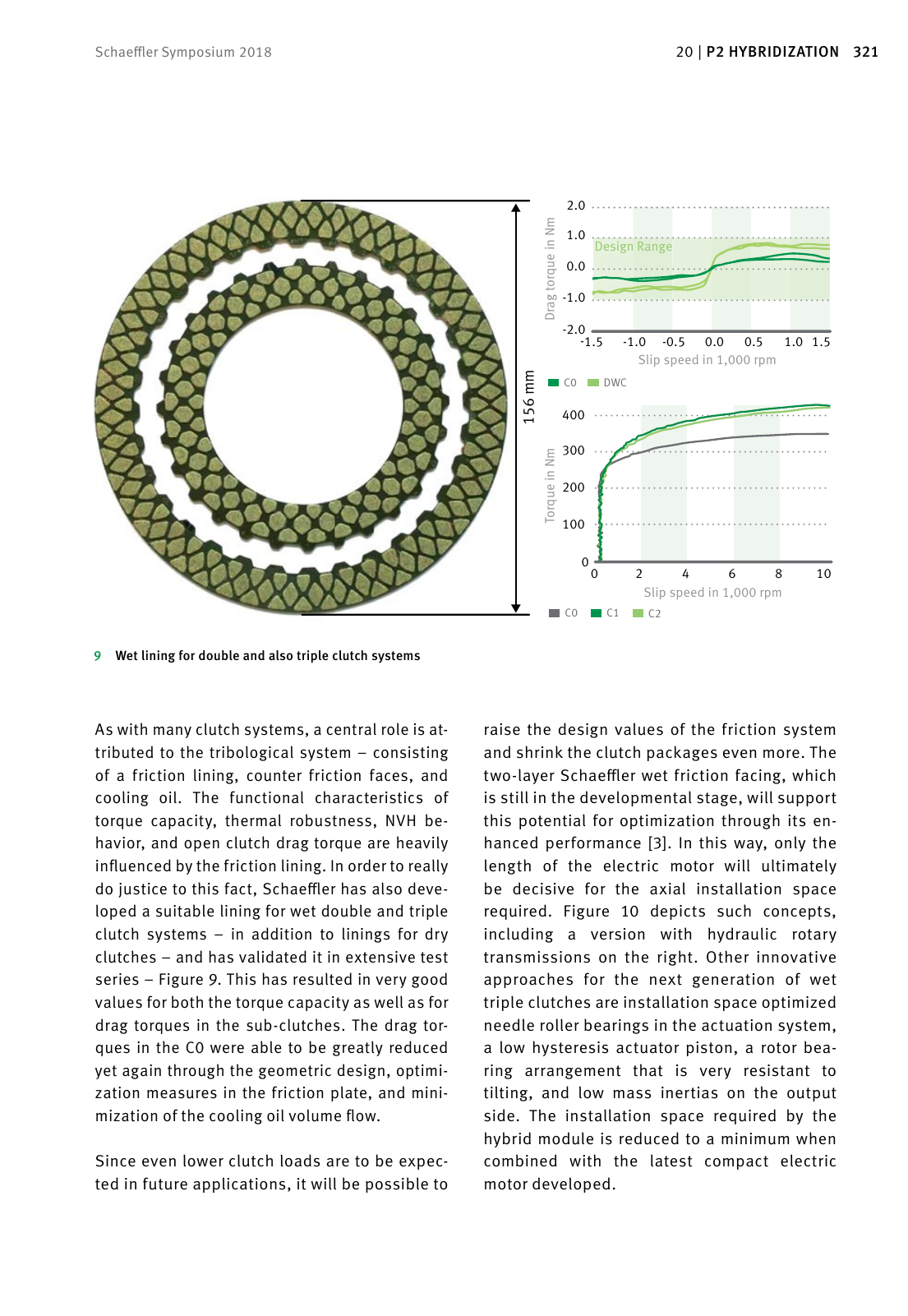320 P2 HYBRIDIZATION 20 32120 P2 HYBRIDIZATIONSchaeffler Symposium 2018 system works very efficiently With the small radi al dimensions of the plate pairs and optimized cooling oil flow only minimal drag torques occur in the open clutches The clutches are completely integrated in the oil cooling circuit of the hybrid module For effi ciency reasons care has been taken to adapt the volume flow of the oil to the cooling perfor mance actually needed in the clutches Figure 7 A partial flow of the respective cooling oil path is used for cooling the C0 and supplying the bearings The oil flowing out of the outer clutch housing also flows along the rotor and partly along the stator of the electric motor thereby contributing to the extraction of heat from there as well While designing the thermal aspects it was possible to ensure uniform heat dissipation from all plates of the multi plate clutches through the design of the oil flow channels Moreover the oil is transported away very quickly from the friction contact so that no un necessary drag losses occur Using rotor coo ling we have succeeded in keeping heat sensi tive magnetic materials within an acceptable temperature range below 150 C even in high load situations thereby increasing the power density of the electric motor Extensive flow and temperature simulations with corresponding optimizations were conducted Figure 8 and the layout was validated using a testing system developed by Schaeffler In addition to ensuring the torque and thermal capacity the focus of the testing was also on optimizing the drag tor ques and losses in the complete system On the basis of many realistic test stand trials it was possible to be demonstrated that the compact wet triple clutch system reliably meets the re quirements with regard to function and opera ting life As with many clutch systems a central role is at tributed to the tribological system consisting of a friction lining counter friction faces and cooling oil The functional characteristics of torque capacity thermal robustness NVH be havior and open clutch drag torque are heavily influenced by the friction lining In order to really do justice to this fact Schaeffler has also deve loped a suitable lining for wet double and triple clutch systems in addition to linings for dry clutches and has validated it in extensive test series Figure 9 This has resulted in very good values for both the torque capacity as well as for drag torques in the sub clutches The drag tor ques in the C0 were able to be greatly reduced yet again through the geometric design optimi zation measures in the friction plate and mini mization of the cooling oil volume flow Since even lower clutch loads are to be expec ted in future applications it will be possible to raise the design values of the friction system and shrink the clutch packages even more The two layer Schaeffler wet friction facing which is still in the developmental stage will support this potential for optimization through its en hanced performance 3 In this way only the length of the electric motor will ultimately be decisive for the axial installation space required Figure 10 depicts such concepts including a version with hydraulic rotary transmissions on the right Other innovative approaches for the next generation of wet triple clutches are installation space optimized needle roller bearings in the actuation system a low hysteresis actuator piston a rotor bea ring arrangement that is very resistant to tilting and low mass inertias on the output side The installation space required by the hybrid module is reduced to a minimum when combined with the latest compact electric motor developed 8 Flow simulation for a P2 hybrid module with an inte grated wet triple clutch Oil inlet Oil outlet Fl ow v el oc ity high low 7 Oil flow inside of the rotor for the sub clutches and the bearing positions 9 Wet lining for double and also triple clutch systems 15 6 m m 0 2 4 6 8 10 0 100 200 300 400 Design Range C0 DWC C0 C1 C2 2 0 1 5 1 0 0 5 0 0 0 5 1 0 1 5 Slip speed in 1 000 rpm Slip speed in 1 000 rpm 1 0 0 0 1 0 2 0 D ra g to rq ue in N m To rq ue in N m

Hinweis: Dies ist eine maschinenlesbare No-Flash Ansicht.
Klicken Sie hier um zur Online-Version zu gelangen.
Klicken Sie hier um zur Online-Version zu gelangen.